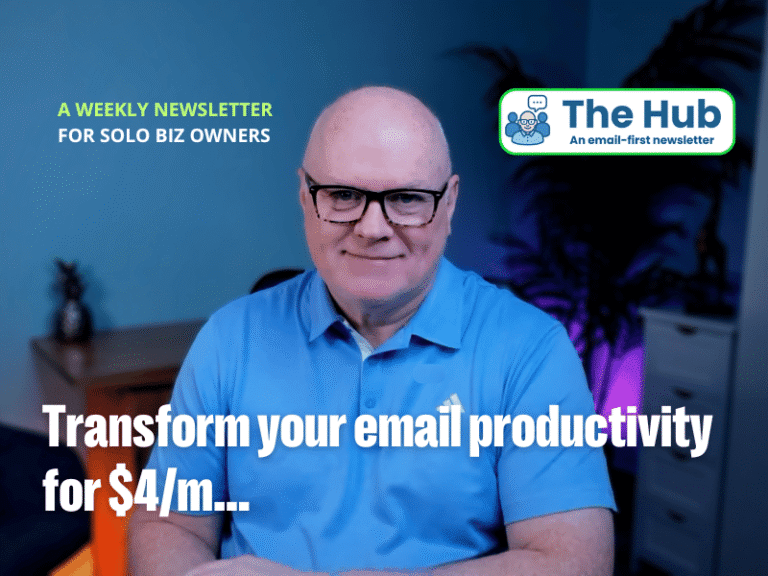|
|
What is email ‘Deliverability’ and why should I care?
𝗗𝗲𝗹𝗶𝘃𝗲𝗿𝗮𝗯𝗶𝗹𝗶𝘁𝘆 is one of the most important considerations for your email marketing system – after all, if your emails don’t make it into your subscribers’ inboxes, they’ll probably never read them. 🤷🏻♂️
Here are 𝟱 𝘁𝗵𝗶𝗻𝗴𝘀 that you can do to help improve your deliverability rates;
✅ 1. 𝗨𝘀𝗲 𝗮 𝗿𝗲𝗽𝘂𝘁𝗮𝗯𝗹𝗲 𝗲𝗺𝗮𝗶𝗹 𝗺𝗮𝗿𝗸𝗲𝘁𝗶𝗻𝗴 𝗽𝗿𝗼𝘃𝗶𝗱𝗲𝗿: choose one with a strong track record of sending emails with high deliverability rates on a consistent basis, and follows industry standards (e.g. ConvertKit).
✅ 2. 𝗕𝘂𝗶𝗹𝗱 𝘆𝗼𝘂𝗿 𝗹𝗶𝘀𝘁 𝗿𝗲𝘀𝗽𝗼𝗻𝘀𝗶𝗯𝗹𝘆: you should be sending emails only to those who have opted-in to receive them, and you should be keeping your list clean and up-to-date by removing any inactive subscribers. Never buy an email list as there’s every chance you’ll get caught by ‘spam traps’.
✅ 3. 𝗛𝗮𝘃𝗲 𝗮 𝗱𝗼𝘂𝗯𝗹𝗲-𝗼𝗽𝘁-𝗶𝗻 𝗽𝗼𝗹𝗶𝗰𝘆: a double-opt-in process requires subscribers to click a link sent to their email address to confirm their subscription. This helps protect you against spam complaints and ensures that you’re only sending emails to those who have explicitly asked to receive them. It also satisfies GDPR for subscriber consent requirements.
✅ 4. 𝗠𝗼𝗻𝗶𝘁𝗼𝗿 𝘆𝗼𝘂𝗿 𝘀𝗲𝗻𝗱𝗲𝗿 𝗿𝗲𝗽𝘂𝘁𝗮𝘁𝗶𝗼𝗻: your sender reputation is key to email deliverability and is affected by things like spam complaints, bounced emails, and unsubscribes. Keep an eye on your reputation and take steps to address any issues.
✅ 5. 𝗙𝗼𝗹𝗹𝗼𝘄 𝗲𝗺𝗮𝗶𝗹 𝗺𝗮𝗿𝗸𝗲𝘁𝗶𝗻𝗴 𝗯𝗲𝘀𝘁 𝗽𝗿𝗮𝗰𝘁𝗶𝗰𝗲𝘀: make sure you’re following email marketing best practices, such as using a recognisable “from” name and address, avoiding the overuse of spammy words, personalising your messages, and making it easy for people to unsubscribe from your list.
The latter measures the percentage of emails that get delivered to the mailbox provider’s server (including Spam/Junk folders), and the former measures the percentage of emails that get delivered into the subscriber’s inbox (or designated tab, e.g. ‘Promotions’).
If you’re not getting the results you want from email marketing, maybe it’s time to get a system health check – reply to this email saying “health check please” if you want some help to get things optimised.
|
|
Where are you on the money pyramid?
The first time I came across this model was during a video that I watched on a course that I bought; it was No BS Marketing by Dan Kennedy, probably the most renowned direct response marketeer of his time. I have no idea if he created it, perhaps he learned it somewhere else, but he was my source so I’ll credit him.
In essence, the model depicts a triangular ‘pyramid’ style image that shows what percentage of businesses are in which percentile of ‘success’, for want of a better phrase.
There are 5 layers to the pyramid;
- 1% – one percent of all businesses owners are what we would deem to be ‘rich’. These are people who are earning way more than most in their field or sector.
- 4% – four percent are prosperous and doing really well when it comes to earnings. They aren’t as rich as the ‘rich’ 1%, but they are crushing it as far as the average business owner is concerned.
- 15% – fifteen percent are making a good living, not having to worry about much when it comes to money. They earn more than most, but aren’t quite on the scale of the top 5% who sit above them on the money pyramid.
- 60% – sixty percent form the majority of business owners. They struggle endlessly to make ends meet and never seem to reach a place where they can take the foot off the gas when it comes to their financials.
- 20% – twenty percent for the bottom layer of the pyramid, and represent those business owners who are broke. They are ready to go bust, quit, or close to being declared bankrupt. They are really not in a good place.
|
|
In my experience, this model stands true across multiple sectors, and in fact, across business types too. It’s a stark reminder that not all business owners are where they want to be, and explains why the failure rate of start-ups is so high.
As solopreneurs, we need all the help and support we can get, that’s why I believe in helping each other as much and as often as we can. We can (and should) always be learning from each other’s successes and failures – it’s key to our survival.
So, where would you place yourself on the money pyramid? I’m not asking you to share it with anyone, but at least be honest with yourself – if you’re not where you want to be, it’s time to make changes.
|
|
Two brothers ‘running’ against each other.
Did you know that Adolf (Adi) and Rudolf (Rudi) Dassler were German-born brothers who founded their own sportswear businesses?
Rudolf founded Puma in 1948, with Adolf founding Adidas just one year later in 1949. The brothers had a fall out, hence the reason for going their separate ways in business.
|
|
For the record, and just in case anyone’s counting, Adidas has a valuation of around $26bn and Puma is worth around a third of that, at $9bn. Not bad for two guys from the same family. 😊
|
Cheers, If we’re not already connected on LinkedIn, then let’s fix that now! If you’re new around here, let me give you a brief intro to who I am and what I do; 👋 Hi, I’m John, a freelancer with 30+ years of experience in software development, business start-up and growth strategies, and digital marketing, specialising in email marketing. I help service-based freelancers grow their businesses by showing them how to effectively implement an email marketing system that’ll bring them leads, prospects, and new clients, complemented with proven success strategies for solopreneur-type businesses.
|



